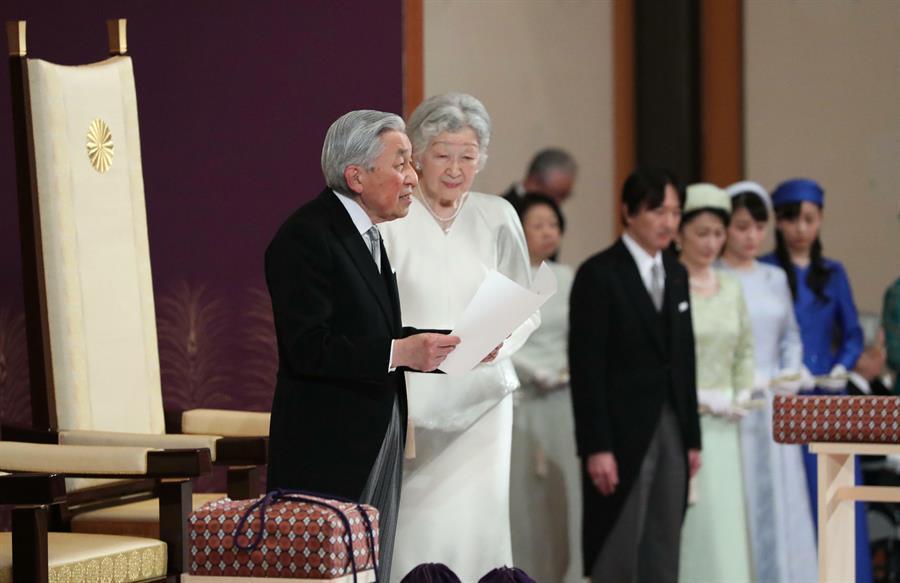
Emperor Akihito of Japan formally stepped down on April 30, the first abdication for 200 years in the world's oldest monarchy, as his son Naruhito prepared to take the Chrysanthemum Throne and usher in a new imperial era.
In the "Room of Pine" in Tokyo's Imperial Palace, the popular 85-year-old performed the abdication ritual in the presence of the imperial regalia- an ancient sword and sacred jewel.
Dressed in a Western-style morning coat, Akihito stood on a small stage before an invited audience and members of the royal family and offered his "deepest heartfelt gratitude to the people of Japan."
He said he would "pray for the peace and happiness of all the people in Japan and around the world."
Empress Michiko stood by his side in a white and silver gown and the outgoing emperor paused briefly after exiting the stage, to help his wife of 60 years down the steps.
Prime Minister Shinzo Abe praised the royal couple, saying they had offered "courage and hope" to the Japanese people, particularly in times of suffering.
"His Majesty has fulfilled his responsibility as the symbol of Japan," Abe said.
Despite near-constant rain in Tokyo, several hundred well-wishers congregated
As Naruhito took over and the new era of "Reiwa"- meaning "beautiful harmony" -began, lasting for as long as he reigns.
Earlier on April 30, draped in ornate golden-brown robes and wearing a towering black hat, Akihito reported his abdication to his ancestors and Shinto gods at several sanctuaries in the palace.
A more public enthronement ceremony will take place on October 22, during which Naruhito will parade through the streets of the capital and be congratulated by other world leaders and royalty.
President Donald Trump sent congratulations, offering "heartfelt appreciation" to the outgoing imperial couple and stressing the "close relationship" between the US and Japan.
He will become the first foreign leader to meet the new emperor on a trip in May.